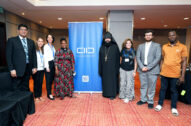With the blessing of His Holiness Aram I Catholicos of the Holy See of Cilicia, I had the privilege to participate in KAICIID (The International Dialogue Centre) Fellows Institutional Network Launch in Kuala Lumpur, Malaysia from 17-18 March 2023. This was my first time participating in a KAICIID event and I had no expectations. My focus was on how I was going to represent my church and tradition to the rest of the participants. In the end, I appreciated the way in which I could understand different religions and share values with my students.
It is a typical inclination to prioritize the service for our immediate circle. However, modern cyberspace illustrates that we are not living within a narrow circle with our immediate peers. Our individual and collective world is full of diversity through means such as cyberspace. In other words, the small screen of our phones is the door of a wider world that moves within seconds and projects different values and education, especially engaging the youth. In this context, we can consider how important it is educating especially young people, about inter-religious tolerance, acceptance, and engagement. Even if we are living in an area where we are only surrounded by members of our own faith religion, we are still part of a larger community that is full of diversity. Moreover, we are living in a world where migration is happening everywhere for a variety of reasons. Step by step, communities with mixed religions and traditions are growing. For some, this is very encouraging and for others it seems threatening. However, any religion, including the Christianity, is called to serve for “Glory to God in the highest, and on earth peace, good will among people.” In different words, all religions are called to work for peace and justice for all.
The Armenian Catholicosate of the Holy See of Cilicia is one of the prominent Armenian religious communities that strongly believes and actively participates in interreligious dialogue. From day one of my journey in the Catholicosate as a student and later as a celibate priest, I witnessed how religious people from different faiths and religions visit His Holiness Aram I Catholicos or participate in different conferences and meetings organized by our Holy See. It was never a surprising or shocking image for me to see our church engaged with different religions.
His Holiness Aram I, as one of the pioneers in ecumenical and interreligious dialogues, continuously highlights the importance of openness to our neighbors. As a matter of fact, in his Issues & Perspectives book, he speaks about the legacy of Cilician culture, which was “a culture of dialogue.” It is noteworthy to quote one of his thoughts on the essentialness of the interreligious relationship and dialogue:
“A new self-understanding, a new vocation of the human being in the creation, a new perception of nature, and a new world outlook were developed out of this comprehensive approach and holistic vision. Indeed, through this strong emphasis on the individual and nature, one can clearly discern the signs of an emerging renaissance in the Armenian culture in Cilicia. Coming from the west, this renaissance, driven and sustained by humanism, acquired the form and color of Armenian culture.”[1]
His Holiness’ thoughts truly reflects one of the beautiful perspectives that any self-understanding and growth can happen in harmonious relationships with different religious and ethnic cultures. This is what drives us to understand our calling as a human being and religious practitioner. Moreover, interreligious relationships and dialogue help us to understand that we belong to a colorful fabric that is not focused locally on a local community but on a world without gates and distinctions.
In this light and after KAICIID’s interreligious conference, I considered the importance of interreligious education for our congregations. However, it is important to understand the urgency of establishing an educational curriculum for interreligious education in schools and particularly in religious institutions. Moreover, along with the curriculum, inviting representatives from different religions to the school where we serve will send the message that all religions are welcomed. As educators, leaders of schools and educational institutions or religious people, we have the responsibility to establish harmony among communities through our own education. In order to build “interreligious friendly” communities, we have to raise the consciousness of the interreligious “self” in people and build bridges between religious communities with active “traffic.”
Rev. Fr. Barouyr Shernezian
Dean of The Armenian Theological Seminary
of the Holy See of Cilicia
[1] Catholicos, Aram I, “Issues & Perspectives,” (Antelias, Lebanon: Armenian Catholicosate of Cilicia, 2013), 73.


